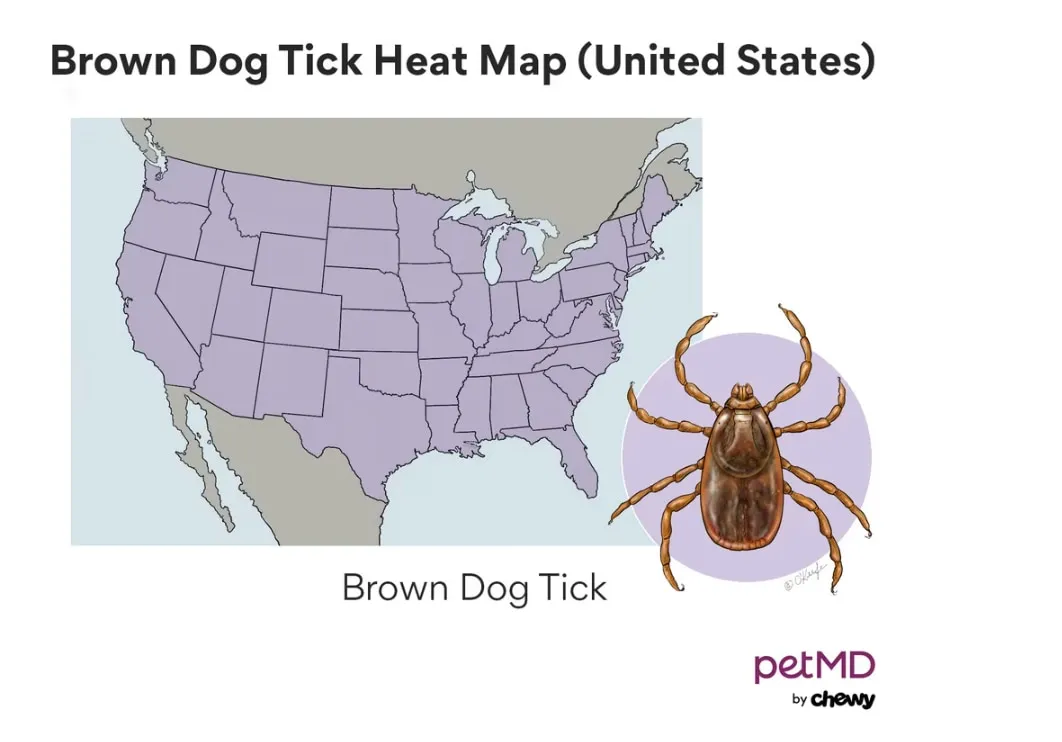Keeping your canine companion safe and healthy is a top priority for any dog owner. One of the most crucial aspects of preventative care involves protecting your dog from pesky external parasites like fleas and ticks. These unwelcome guests don’t just cause discomfort; they can also transmit serious diseases. Understanding the Best Medicine To Get Rid Of Ticks On Dogs is essential for their well-being and for safeguarding your household. This guide will delve into why tick prevention is vital, when to start it, and how to choose the most effective treatments for your furry friend, ensuring they remain happy and healthy year-round.
Why Flea and Tick Prevention is Non-Negotiable for Dogs
Fleas and ticks are more than just an itchy nuisance. They are ectoparasites, meaning they live on the exterior of their host and feed on blood to survive. A single bite can trigger a cascade of health problems for your dog.
Flea bites can lead to severe allergic reactions, causing intense itching, dermatitis, and even anemia if the infestation is heavy. The constant scratching can further lead to skin infections. Tick bites, while often painless initially, pose a significant threat by transmitting a range of dangerous diseases. These can include Lyme disease, Ehrlichiosis, Anaplasmosis, Rocky Mountain Spotted Fever, and others. Some of these tick-borne illnesses can be life-threatening and, in some cases, can even be transmitted to humans, making your dog’s protection a matter of public health as well.
 A close-up of a tick embedded in a dog's fur
A close-up of a tick embedded in a dog's fur
The importance of consistent protection cannot be overstated, as these parasites can harbor and spread a variety of debilitating diseases to dogs.
When Should Your Dog Start Tick Prevention?
Fleas and ticks are remarkably resilient creatures that can thrive in diverse climates and environments. Given the severe health risks they pose and their potential to spread to humans, it’s crucial to initiate flea and tick prevention for your dog at a young age. Most veterinarians recommend starting preventative treatments when puppies are around 8 weeks old. Furthermore, consistent, year-round protection is vital, as these parasites don’t necessarily disappear with the changing seasons in many regions.
Choosing the Right Tick Treatment: A Multifaceted Approach
When it comes to eliminating and preventing ticks on dogs, a variety of products are available, each with its own mechanism of action. These can include pesticides, repellents, or insect growth inhibitors, designed to target different stages of the parasite’s life cycle and prevent infestations.
While some treatments focus solely on fleas, combination flea and tick preventatives for dogs are often the most comprehensive choice. These formulations typically contain multiple active ingredients to combat a wider spectrum of pests. Beyond fleas and ticks, many advanced preventatives also offer protection against heartworms, various types of mites (skin and ear), and even internal parasites.
When selecting a product, always consult with your veterinarian. They can provide personalized recommendations based on your dog’s specific needs and health profile. Key factors to discuss include:
- Species Appropriateness: Ensure the product is formulated for dogs, not cats, as some ingredients are toxic to felines.
- Weight and Age: Products have specific weight and age restrictions to ensure safety and efficacy.
- Targeted Parasites: Confirm the product effectively covers the parasites prevalent in your region.
- Application Method: Decide between oral or topical treatments based on your dog’s temperament and your lifestyle.
- Dosage and Frequency: Understand how often to administer the treatment and its duration of effectiveness.
- Onset of Action: Know how quickly the product starts working.
- Bathing and Swimming: Be aware of how water exposure might affect the treatment’s efficacy, especially for topical applications.
- Safety Concerns and Adverse Reactions: Understand potential side effects and what to do in case of an adverse reaction.
To ensure your dog receives the most comprehensive protection, consider options that tackle multiple parasites. For instance, Credelio Quattro offers broad protection against six types of parasites: fleas, ticks, heartworms, roundworms, hookworms, and tapeworms.
1. Application Method: Oral vs. Topical
- Oral Treatments: These are typically chewable tablets that are easy to administer, often given as a treat. However, it’s important to monitor your dog to ensure they consume the entire tablet and do not vomit it before absorption. This makes them a convenient option for many owners and is a very effective dog flea and worm treatment combined.
- Topical Treatments: Applied as a liquid between the shoulder blades or along the back, topical treatments are an excellent choice for dogs with sensitive stomachs or those who are finicky eaters. However, caution is advised in households with young children or other pets, as direct contact or licking before the product dries should be avoided. Topical treatments can also be less effective for dogs that frequently swim or require regular baths, as water can wash away the active ingredients. For those seeking specific topical solutions, exploring best topical flea treatment for dogs can be beneficial.
 A veterinarian applying a topical flea and tick treatment to a dog's back
A veterinarian applying a topical flea and tick treatment to a dog's back
2. Geographical Location and Local Parasite Populations
The types of fleas and ticks, and the diseases they carry, can vary significantly by region. Resources like the Companion Animal Parasite Council (CAPC) are invaluable for identifying the specific parasites active in your area. This knowledge helps you choose a product that offers protection against the prevalent tick species in your locality, such as the common American dog tick or the dreaded deer tick.
3. Outdoor Access and Environmental Factors
Consider where your dog spends their time. Parks, wooded areas, hiking trails, and even your backyard can be hotspots for fleas and ticks. Dogs that frequently explore these environments have a higher risk of exposure. Even indoor-only dogs are not entirely immune; fleas can hitch a ride indoors on shoes, clothing, or other pets. Therefore, veterinarians generally recommend year-round prevention for all dogs, regardless of their outdoor activity level.
4. The MDR-1 Gene Mutation
Certain breeds, including Collies, Australian Shepherds, and Shetland Sheepdogs, may carry a gene mutation known as MDR-1. This mutation affects how their bodies metabolize certain medications, potentially leading to adverse reactions. It is advisable to discuss MDR-1 testing with your veterinarian, especially if your dog belongs to a susceptible breed. Many preventative manufacturers have tested their products and found them to be safe for dogs with this mutation.
5. Lifestyle and Breed Predispositions
While no breed is inherently immune to ticks, a dog’s lifestyle can influence their risk. Working dogs, herding breeds, and hunting dogs, which often spend extensive time outdoors in natural environments, may encounter more parasites than dogs with a more sedentary lifestyle.
6. Life Stage and Size
Puppies and small dog breeds require special consideration. Most flea and tick preventatives have a minimum age and weight requirement, typically around 8 weeks and 3-5 pounds. Products like Revolution Topical Solution for Kittens and Puppies are specifically formulated for younger animals and can be used as early as 6 weeks. Always consult your vet to find the appropriate product for your puppy.
7. Pre-existing Medical Conditions
Dogs with a history of seizures or neurological disorders should be treated with caution, especially when considering isoxazoline-class preventatives. These medications may increase the risk of breakthrough seizures in susceptible individuals. If your dog has a history of allergic reactions to medications, is underweight, sick, pregnant, or nursing, discuss these factors thoroughly with your veterinarian before administering any new treatment.
Over-the-Counter vs. Prescription Tick Medications
The market offers both over-the-counter (OTC) and prescription-only flea and tick medications.
Over-the-Counter Flea and Tick Products
OTC products are readily available online and in pet supply stores and do not require a veterinary prescription. While convenient, it is still crucial to consult your veterinarian to ensure the chosen OTC product is safe and effective for your specific dog.
Prescription Flea and Tick Products
Prescription medications, while typically more expensive, are generally recommended by veterinarians due to their higher efficacy and safety profiles. These products are dispensed based on your veterinarian’s assessment of your dog’s health and needs. They often provide more robust protection against a wider range of parasites and can be tailored to address specific health concerns. For those seeking effective solutions, understanding the best flea treatment for dogs often leads to prescription options.
Popular and Effective Tick Prevention Products for Dogs
Numerous brands offer reliable solutions for tick prevention and treatment. Here are some commonly used and effective options:
- Advantage II: A monthly topical treatment effective against fleas, including eggs and larvae, and chewing lice. It does not offer tick protection.
- Advantage Multi: A monthly topical that treats fleas, sarcoptic mange, and various intestinal parasites, and prevents heartworm disease. It does not protect against ticks.
- Bravecto: Available as a chewable tablet or topical solution, Bravecto contains fluralaner and is effective against fleas and ticks for up to 12 weeks. It also treats demodectic and sarcoptic mange and ear mites. Use with caution in dogs with a history of seizures.
- Comfortis: A monthly chewable tablet containing spinosad, specifically for flea treatment. It kills fleas rapidly but does not protect against ticks.
- Credelio: A monthly chewable tablet with lotilaner, effective against fleas and ticks. It begins killing fleas within hours. Use with caution in dogs prone to seizures.
- Credelio Quattro: A comprehensive monthly chewable tablet that treats fleas, ticks, heartworms, roundworms, hookworms, and tapeworms, making it a powerful dog flea and worm treatment combined option.
- Frontline Gold: A monthly topical that kills fleas, ticks, and chewing lice. It is fast-acting against fleas and ticks.
- Frontline Plus: A monthly topical that treats fleas, ticks, and chewing lice using fipronil and (s)-methoprene.
- Frontline Shield: This monthly topical product targets fleas, ticks, chewing lice, and stable flies, and also repels mosquitoes. It is highly toxic to cats and requires extreme caution in multi-pet households.
- K9 Advantix II: A monthly topical that repels and kills fleas, ticks, mosquitoes, and chewing lice, and repels biting flies. It is highly toxic to cats.
- Nexgard: A monthly chewable tablet containing afoxolaner, effective against fleas, various tick species, and also used for mange treatment. It starts killing fleas quickly but takes longer for ticks. Use with caution in seizure-prone dogs. Exploring topical tick treatment for dogs might offer alternatives if oral medications are a concern.
- Onguard Plus: A monthly topical that eliminates fleas, ticks, sarcoptic mange, and chewing lice.
- Seresto: An 8-month flea and tick collar that kills and repels parasites. Its efficacy can be reduced by frequent bathing or swimming.
- Simparica Trio: A monthly chewable tablet offering protection against fleas, ticks, roundworms, hookworms, and heartworm disease. It also treats mange and ear mites. This offers broad-spectrum protection and is a fantastic option for the best cheap flea treatment for dogs when considering its comprehensive coverage.
- Trifexis: A monthly chewable tablet that treats fleas, hookworms, roundworms, and whipworms, and prevents heartworm disease. It does not protect against ticks.
- Vectra 3D: A monthly topical that repels and kills fleas, ticks, mosquitoes, chewing lice, flies, and some mites. It is highly toxic to cats.
References
- Companion Animal Parasite Council (CAPC): https://capcvet.org/
References
- PetMD: https://www.petmd.com/dog/vet-verified/best-flea-tick-medications-for-dogs
- PetMD: https://www.petmd.com/dog/conditions/skin/c_multi_flea_bite_hypersensitivity
- PetMD: https://www.petmd.com/dog/conditions/systemic/anemia-dogs
- PetMD: https://www.petmd.com/dog/symptoms/why-my-dog-itching-so-much
- PetMD: https://www.petmd.com/dog/conditions/infectious-parasitic/6-tick-diseases-dogs
- PetMD: https://www.petmd.com/dog/general-health/8-types-ticks-dogs
- PetMD: https://www.petmd.com/dog/breeds/collie
- PetMD: https://www.petmd.com/dog/breeds/australian-shepherd
- PetMD: https://www.petmd.com/dog/breeds/shetland-sheepdog
- PetMD: https://www.petmd.com/dog/general-health/mdr1-gene-in-dogs
- PetMD: https://www.petmd.com/dog/general-health/best-hunting-dogs
- PetMD: https://www.petmd.com/dog/general-health/small-dog-breeds
- PetMD: https://www.petmd.com/dog/conditions/neurological/epilepsy-dogs
- PetMD: https://www.petmd.com/dog/conditions/reproductive/dog-pregnancy-birth-and-puppy-care-complete-guide
- PetMD: https://www.petmd.com/dog/parasites/how-choose-flea-and-tick-pill-dogs
- PetMD: https://www.petmd.com/dog/parasites/evr_multi_understanding_the_flea_life_cycle
- PetMD: https://www.petmd.com/dog/conditions/skin/c_dg_sarcoptic_mange
- PetMD: https://www.petmd.com/dog/conditions/infectious-parasitic/c_multi_ancylostomiasis
- PetMD: https://www.petmd.com/dog/conditions/infectious-parasitic/c_multi_ascariasis
- PetMD: https://www.petmd.com/dog/conditions/infectious-parasitic/c_multi_trichuriasis
- PetMD: https://www.petmd.com/dog/general-health/dogs-that-love-to-swim
- PetMD: https://www.petmd.com/dog/conditions/neurological/dog-seizures
- PetMD: https://www.petmd.com/pet-medication/seresto-flumethrin-imidacloprid
- PetMD: https://www.petmd.com/dog/general-health/about-the-wood-tick
- PetMD: https://www.petmd.com/general-health/lone-star-tick
- PetMD: https://www.petmd.com/dog/conditions/skin/c_multi_Demodicosis
- PetMD: https://www.petmd.com/dog/general-health/black-fly-bite-dogs
- PetMD: https://www.petmd.com/dog/conditions/infectious-parasitic/c_dg_heartworm_disease
WRITTEN BY
Lauren Jones, VMD
Veterinarian
Dr. Lauren Jones graduated from the University of Pennsylvania School of Veterinary Medicine in 2010, after receiving her bachelor’s degree…
